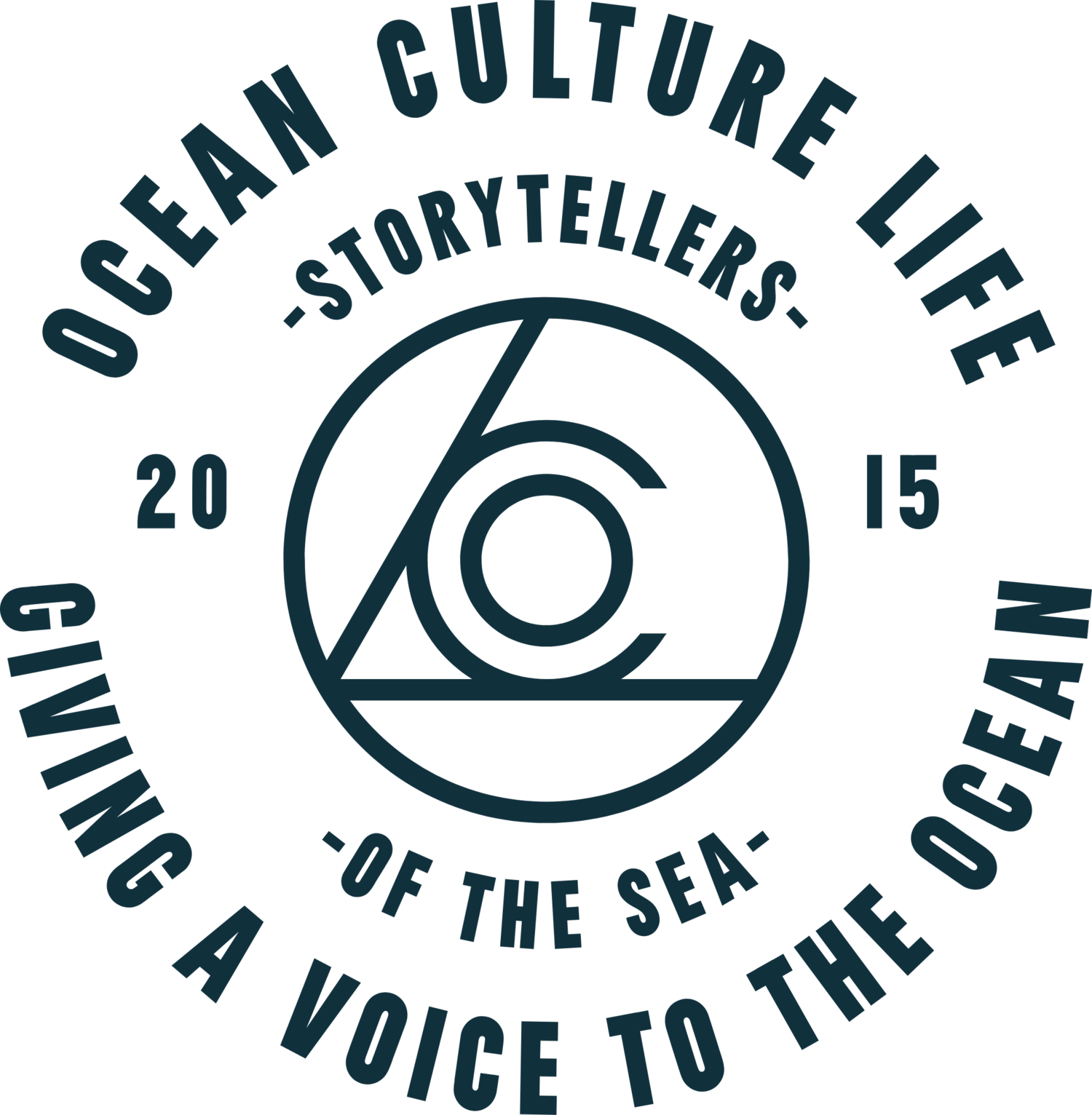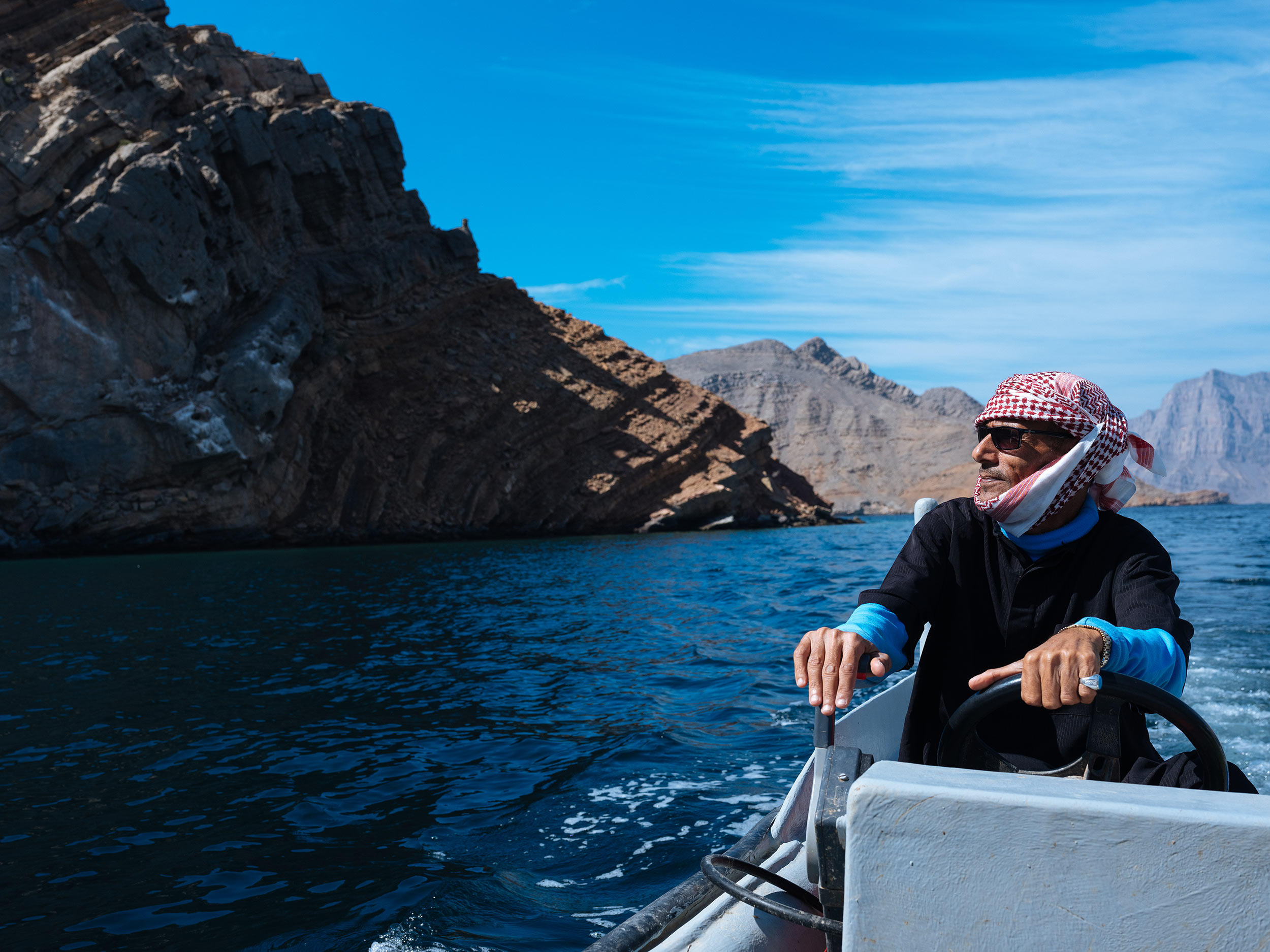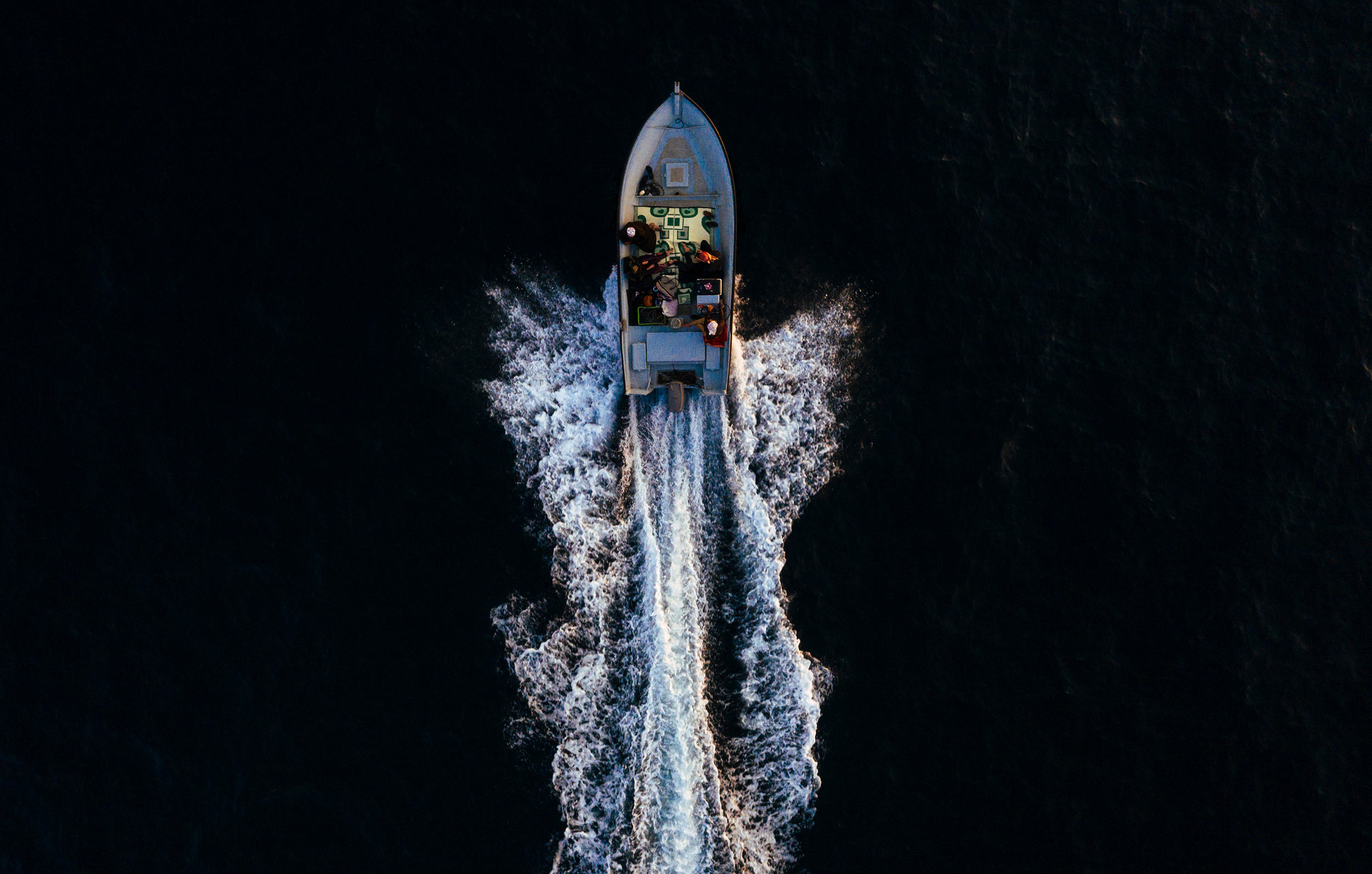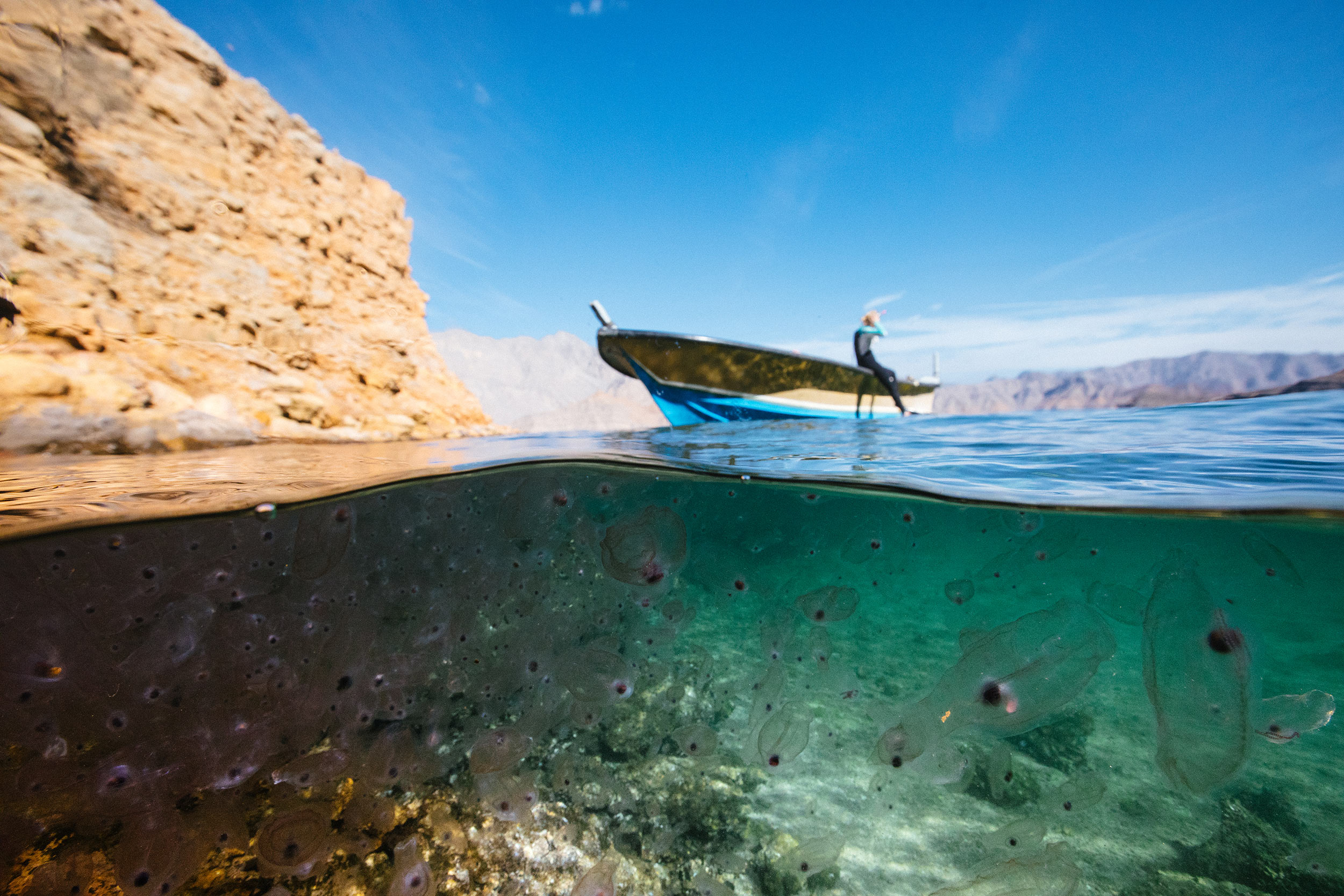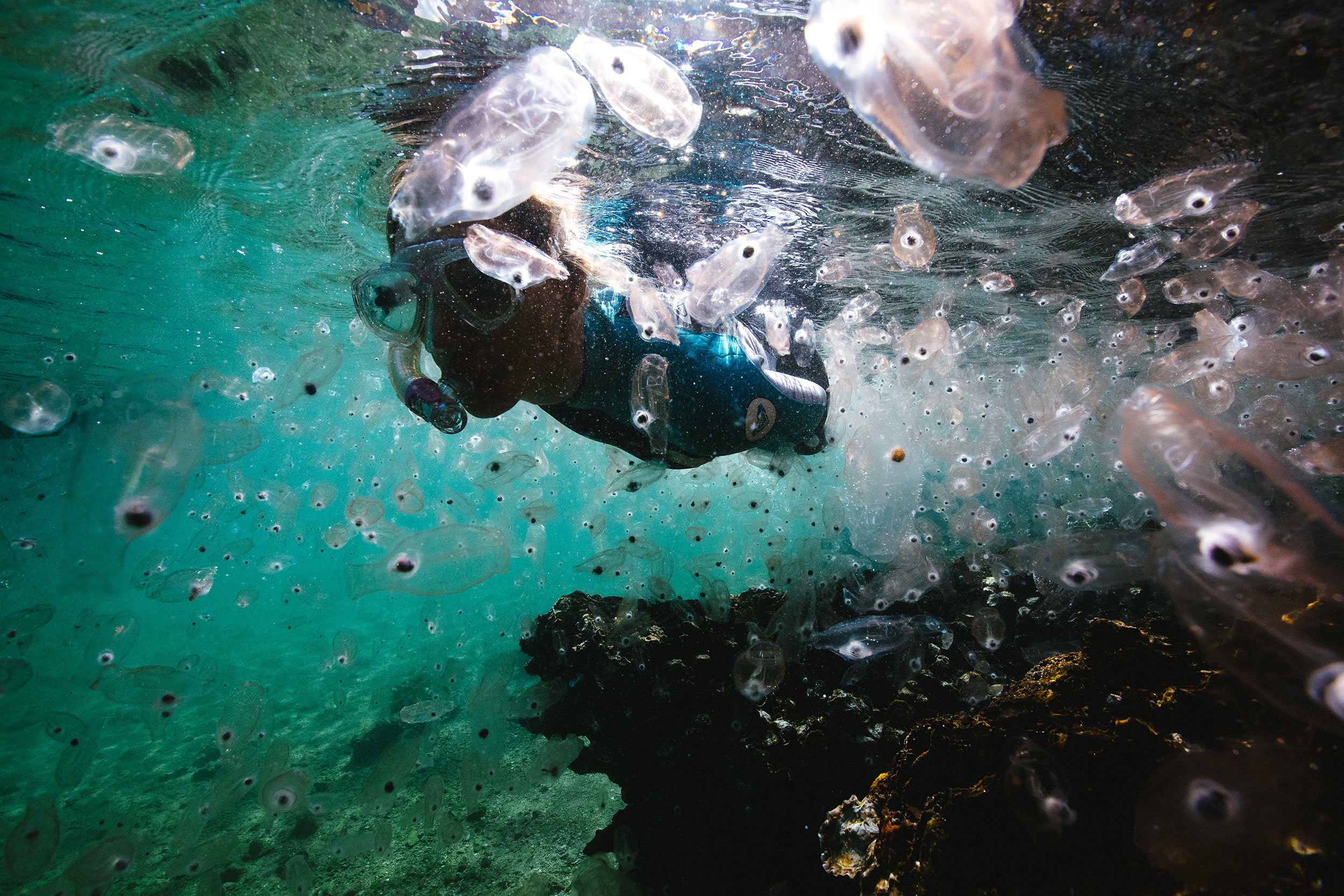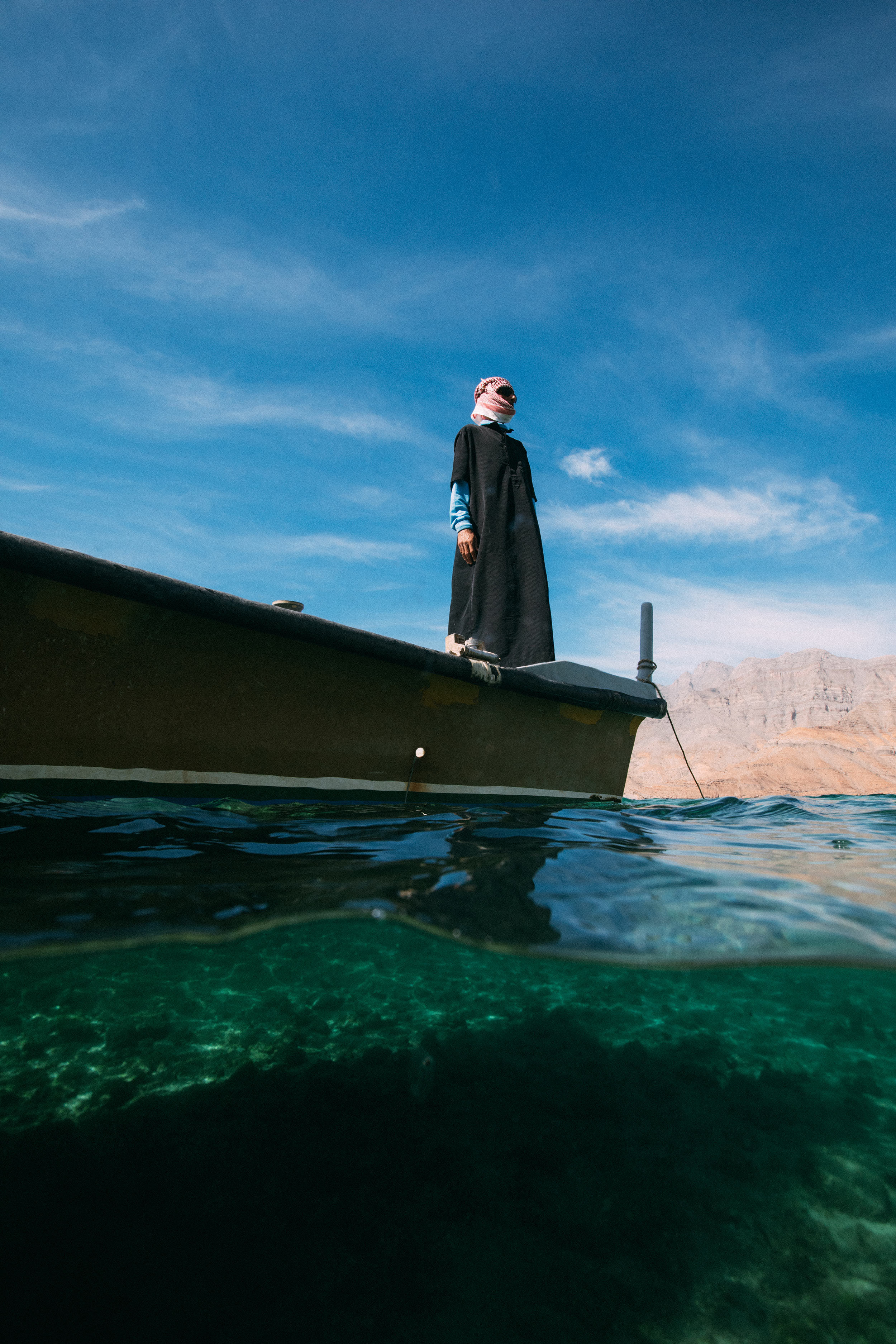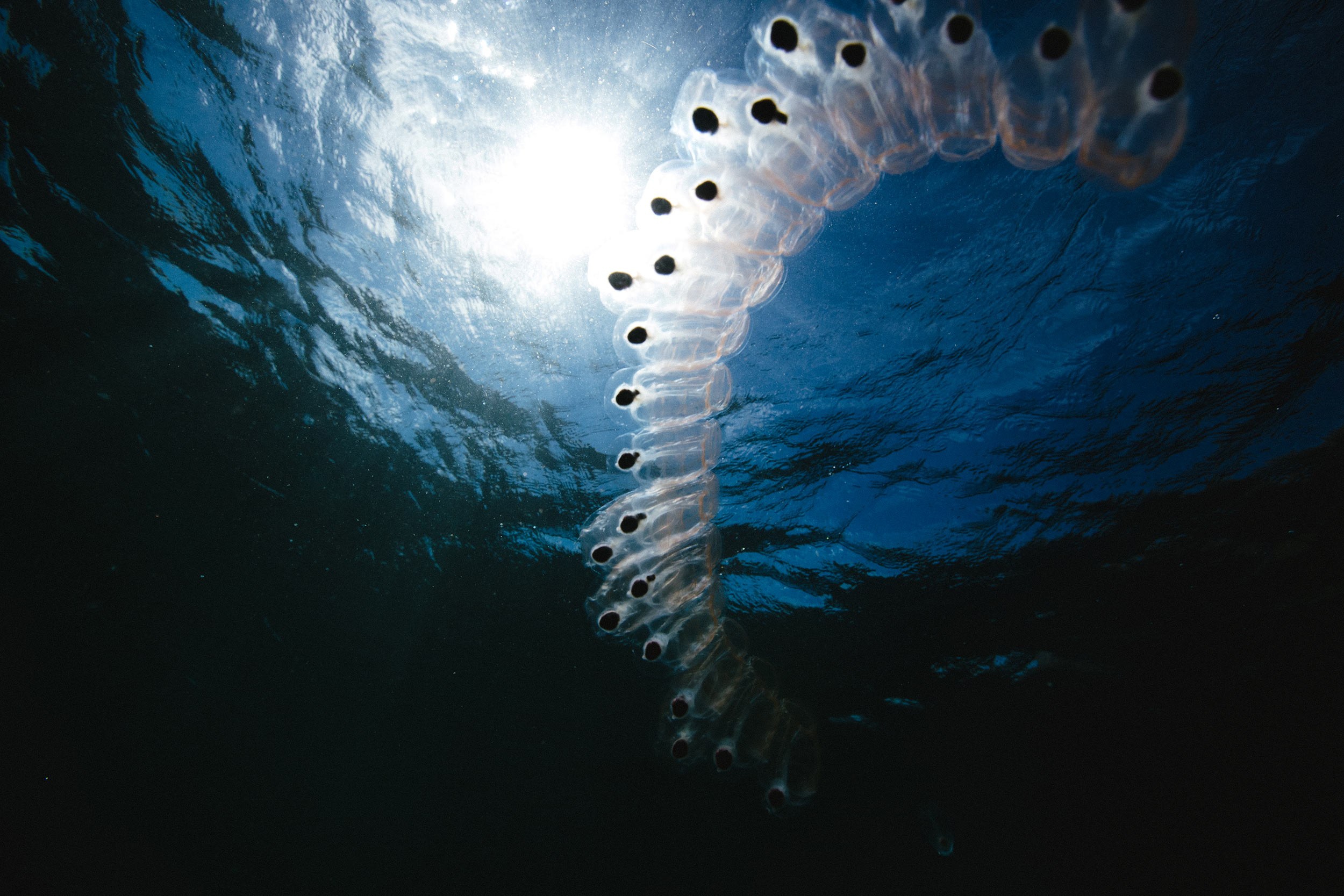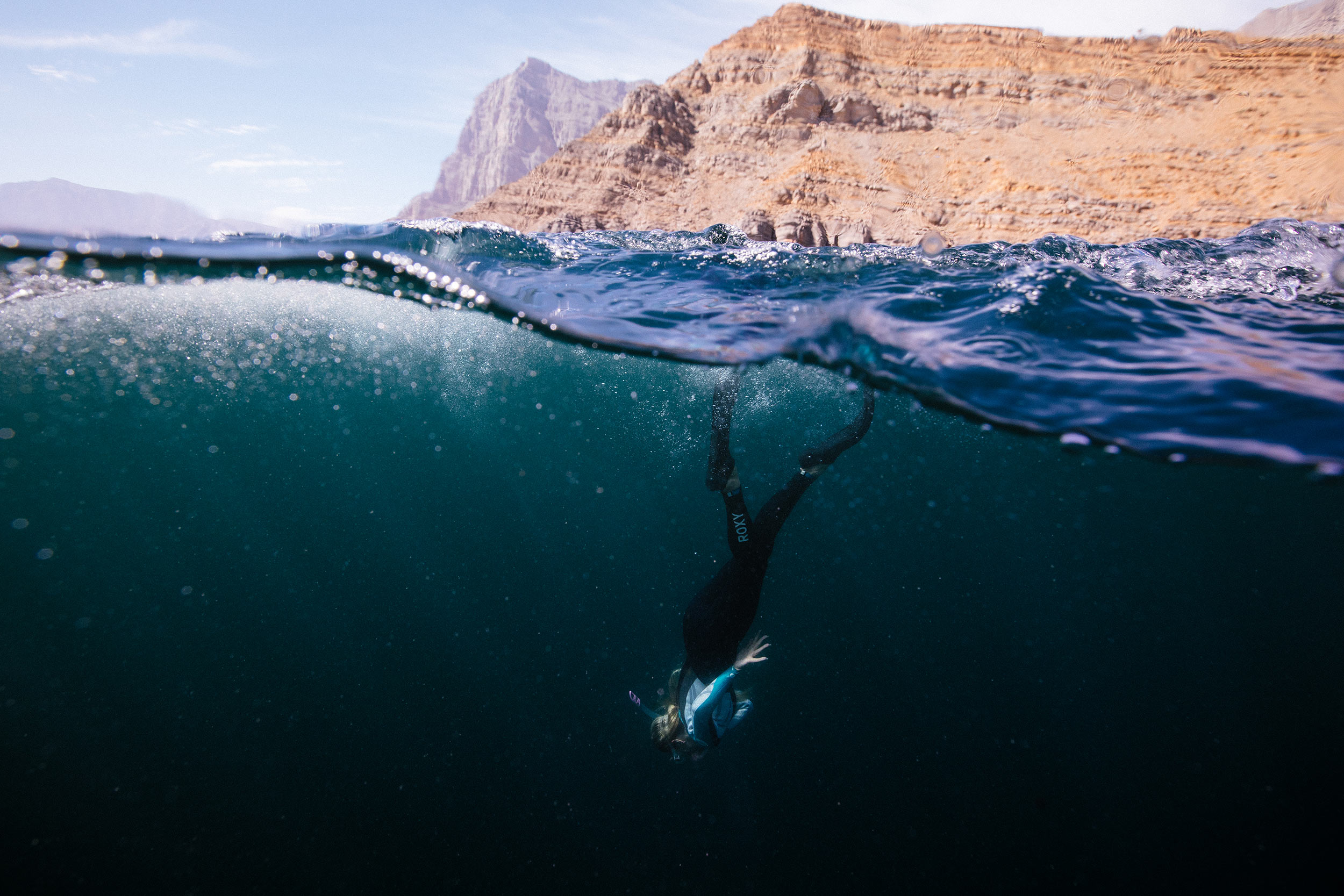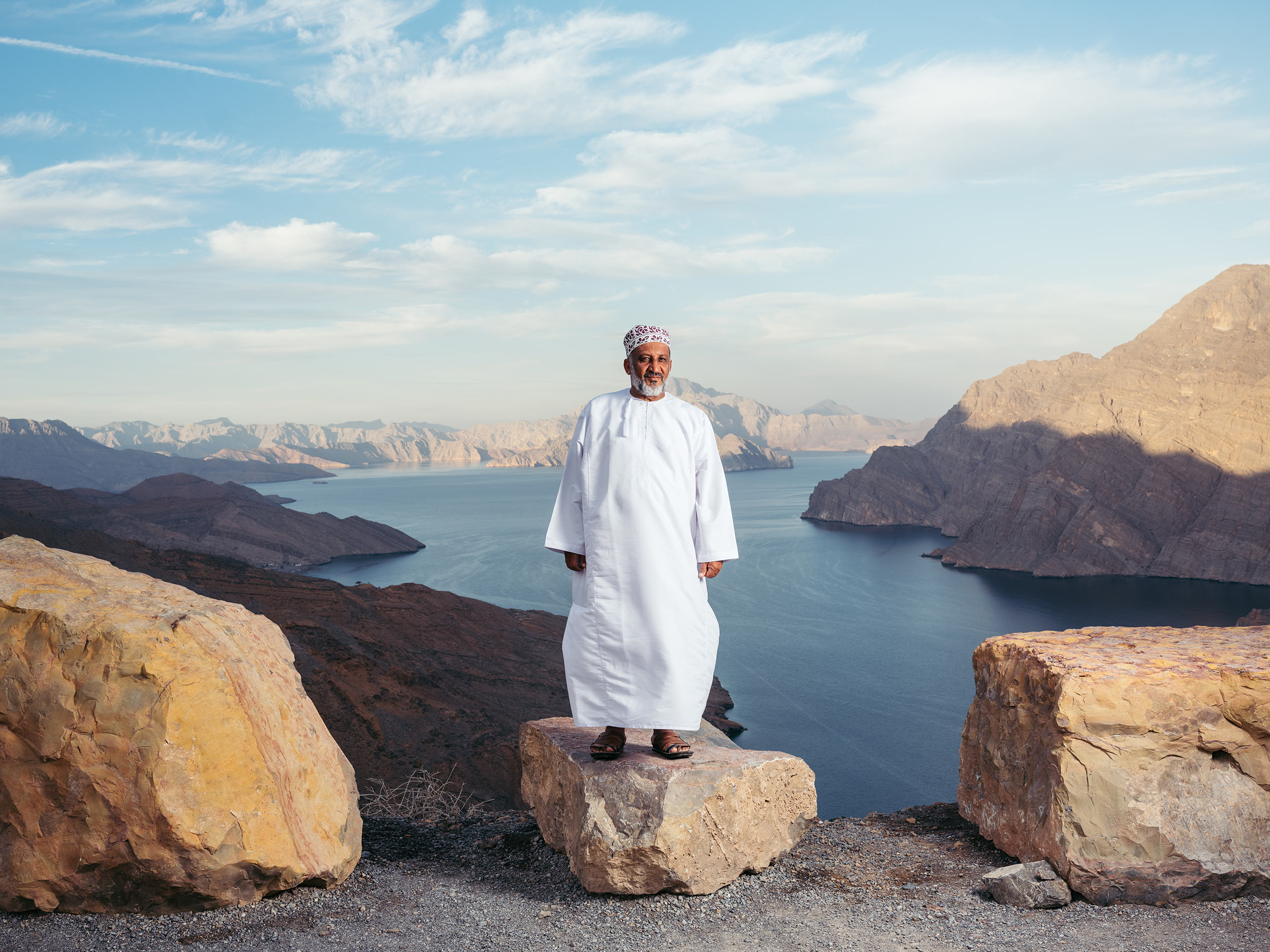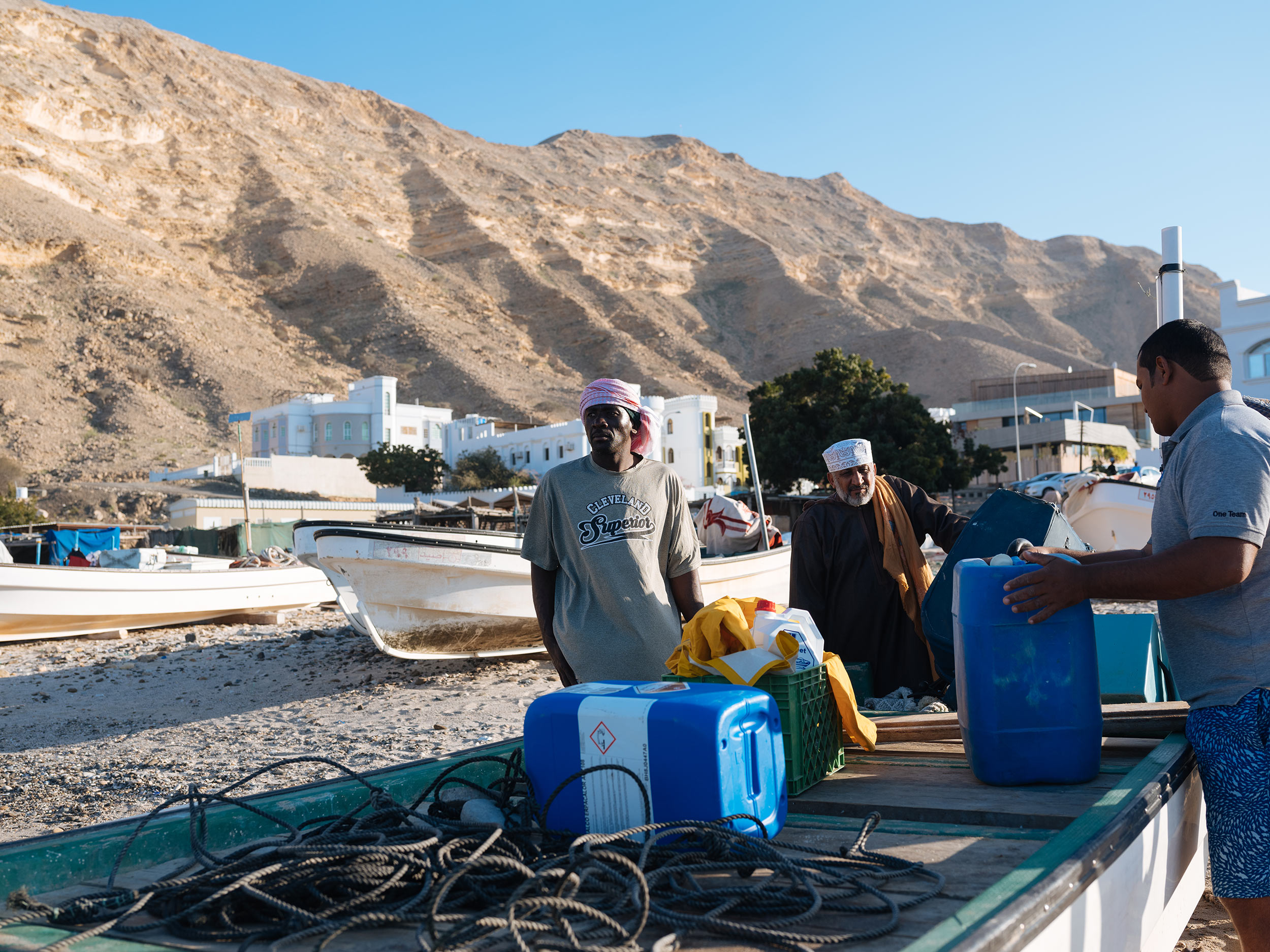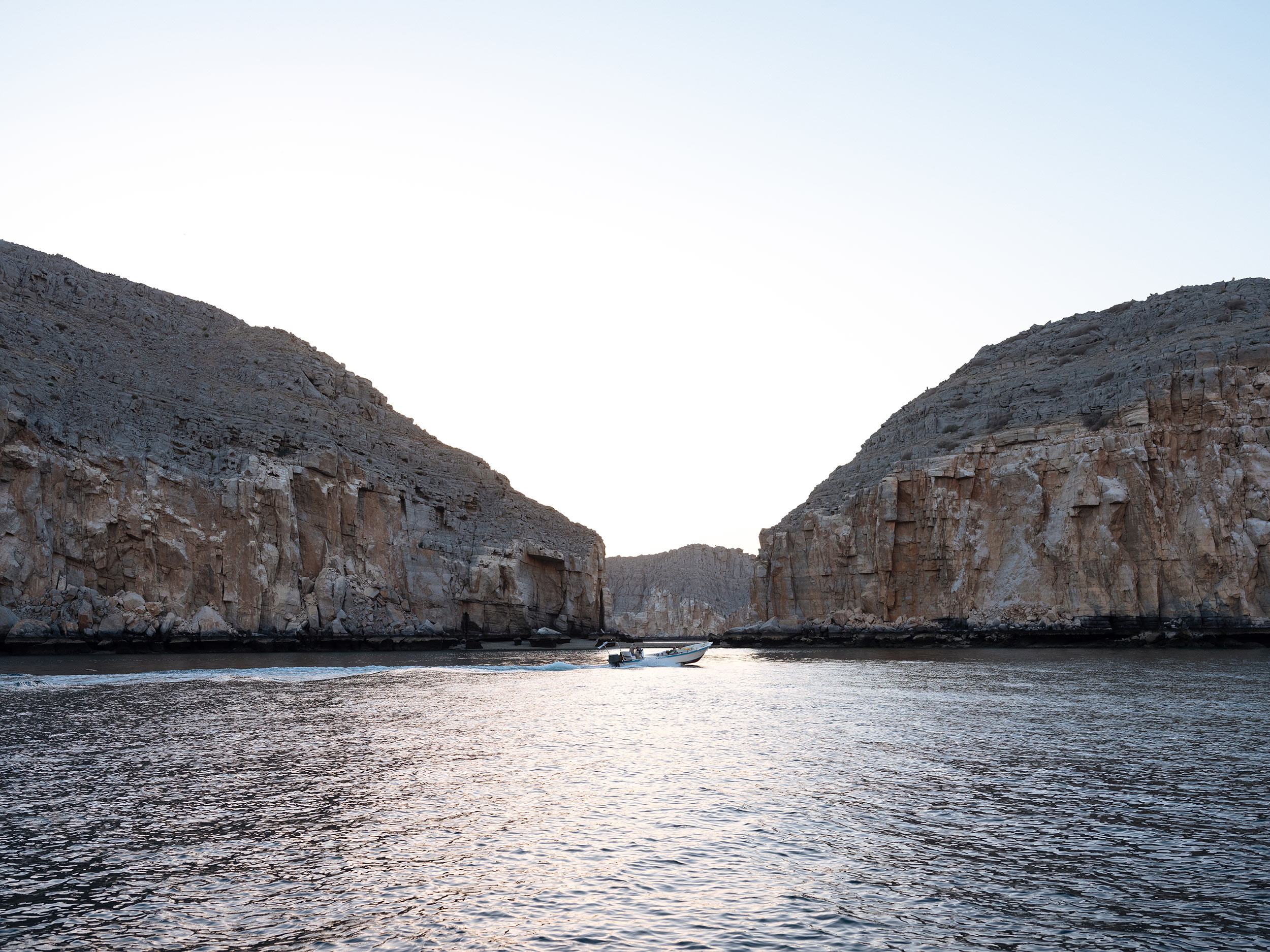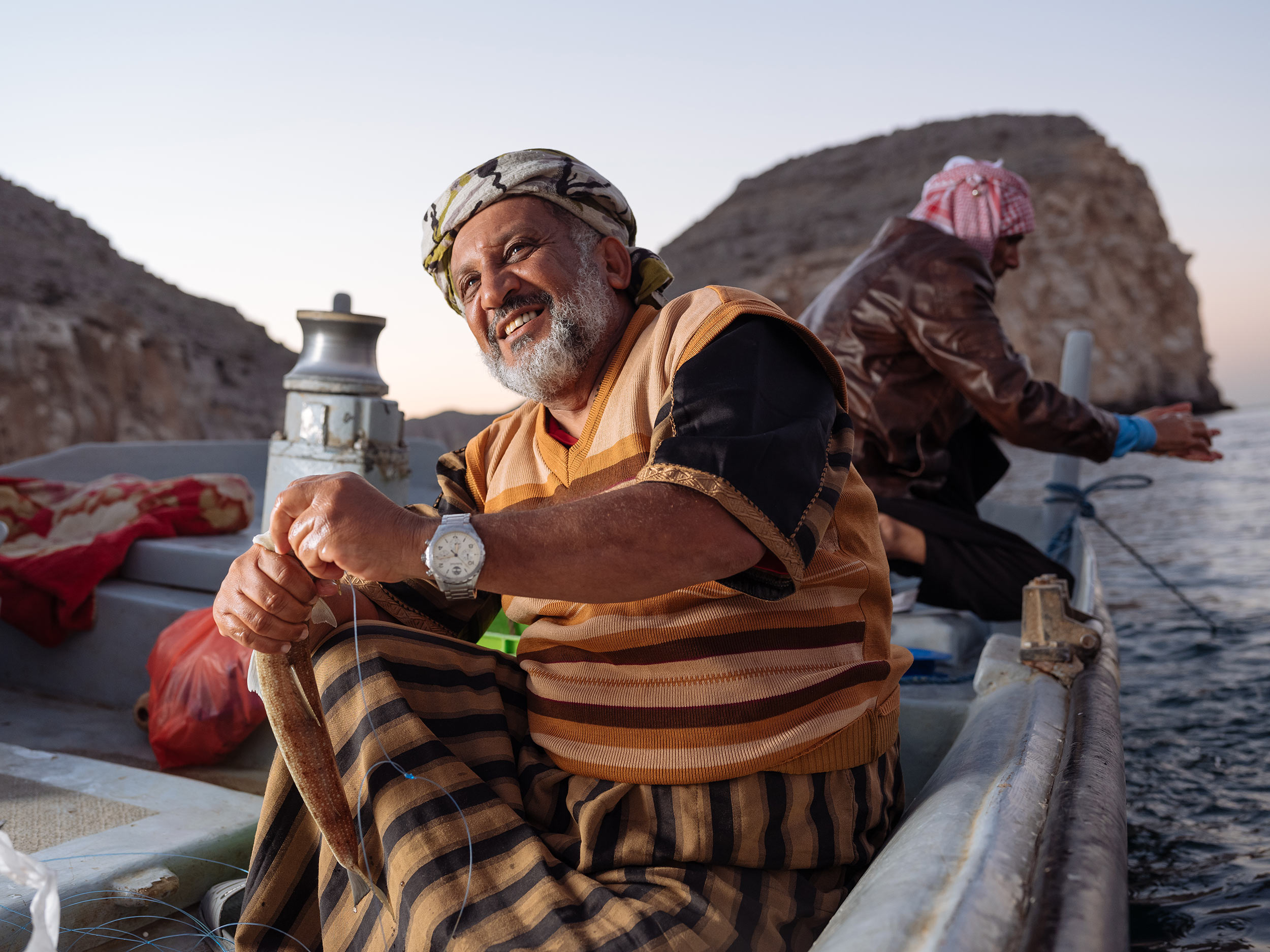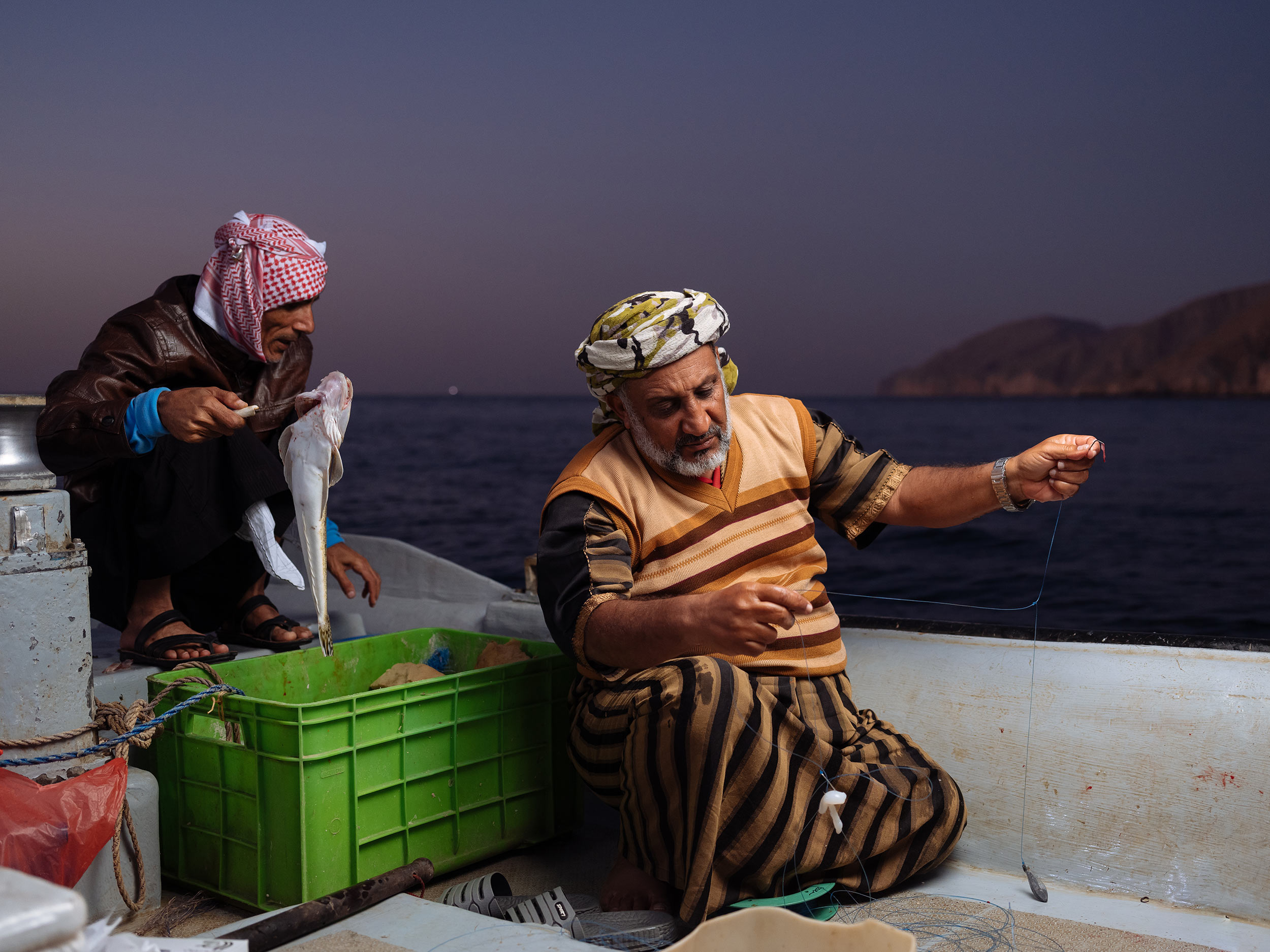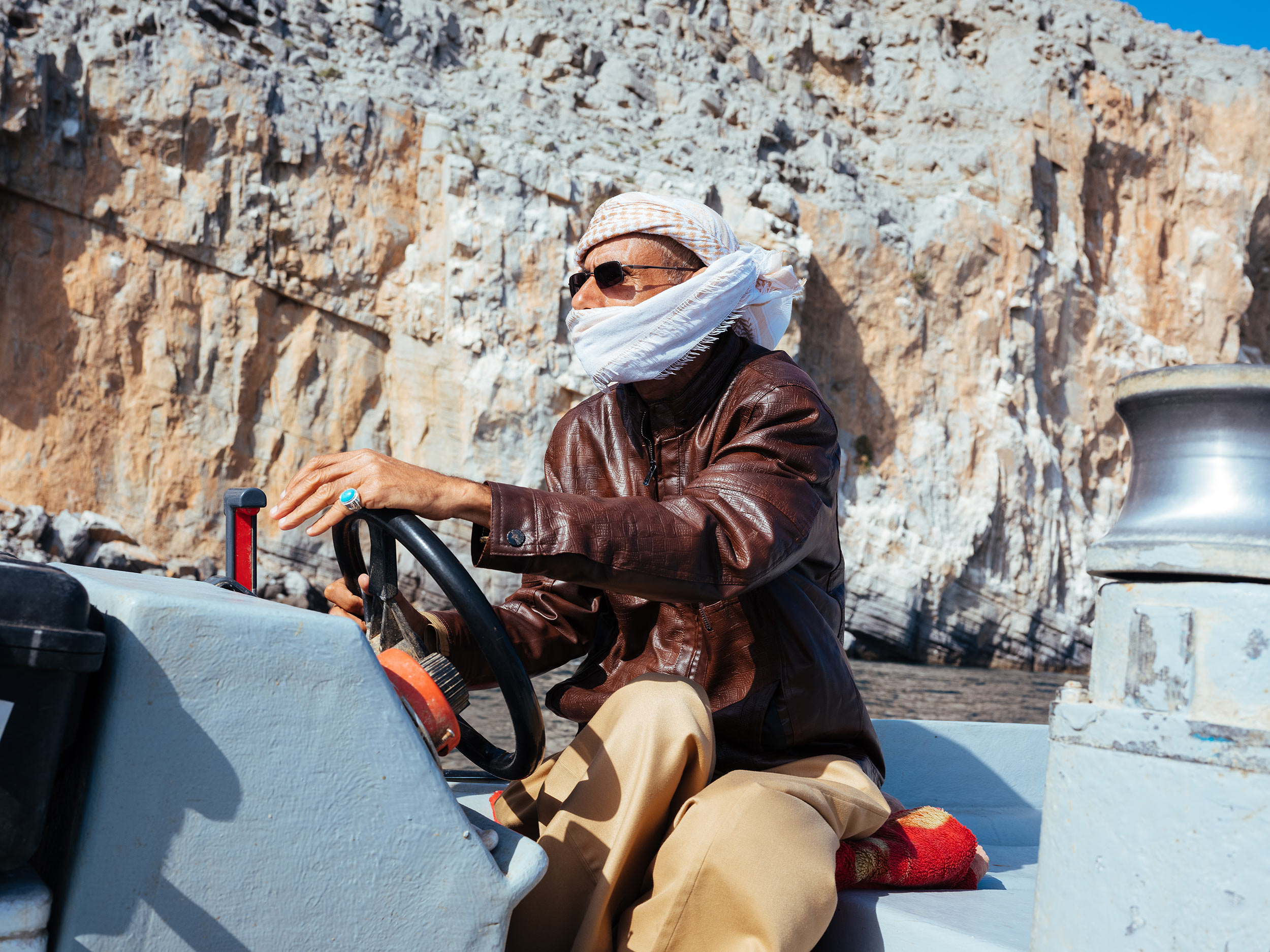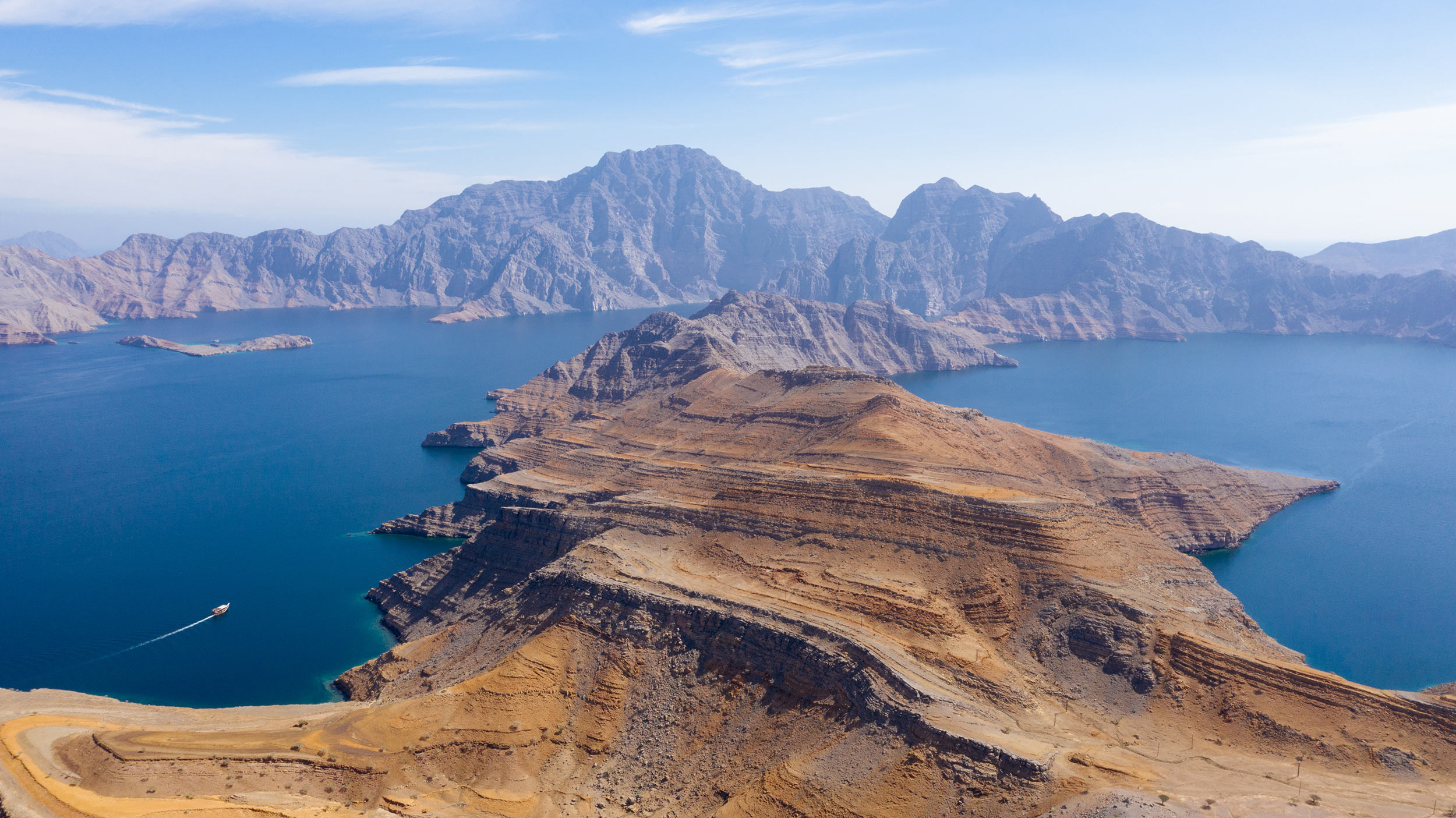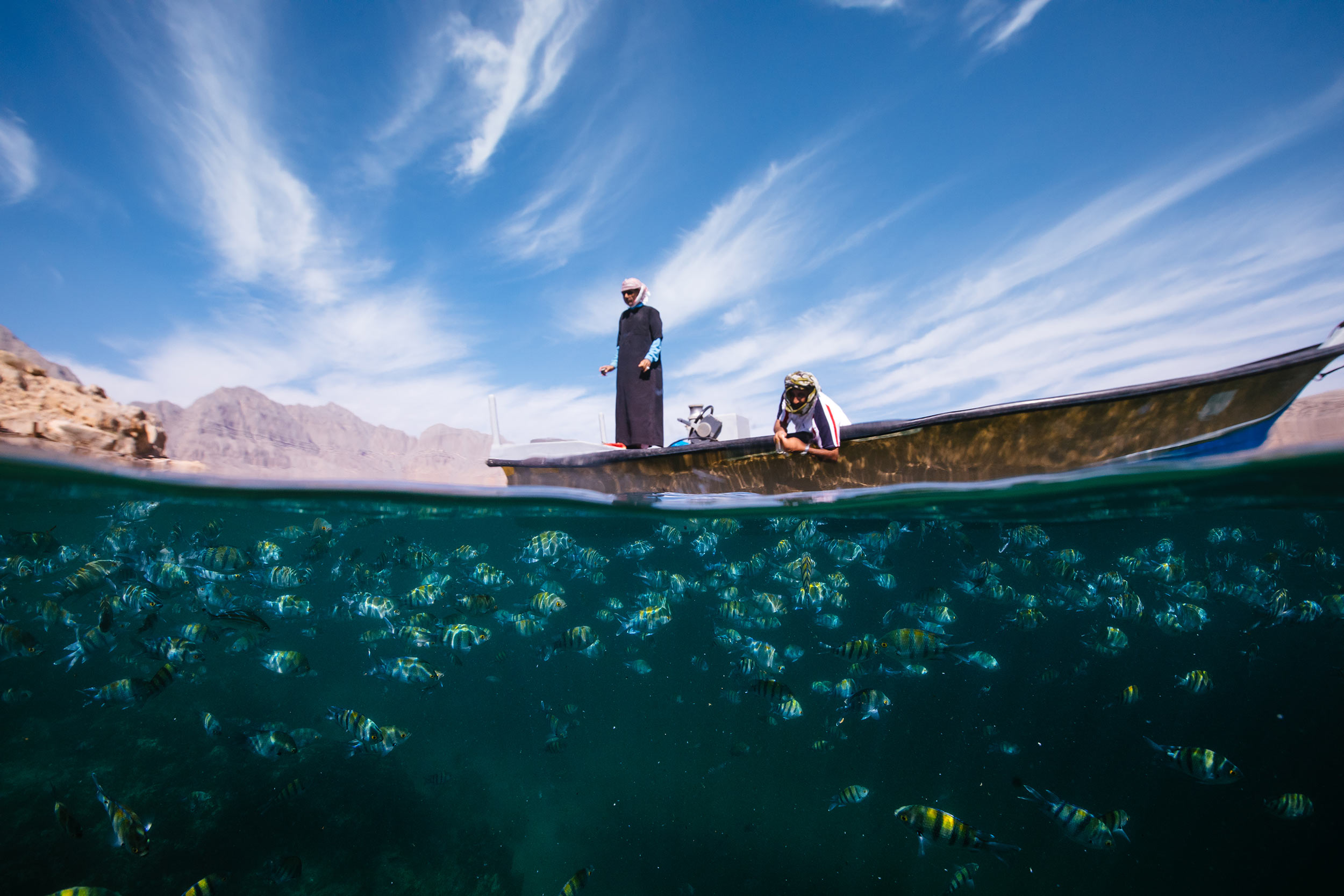Sustainable Fishing Oman
26.338124, 56.411211
A Photo Journal
With the world’s oceans increasingly depleted of fish and instead enriched with plastic, it seems campaigners, influencers and individuals are taking a stance to promote sustainability which can all too often be a buzzword without much substance. Despite the decline in the catch of fish, the fishing industry struggles to reverse this alarming trend.
Powerful stories are needed to ensure the top of the priority list for all fisheries companies, whilst also encouraging support, recognition and ultimately action.
Matt Porteous recently spent time in Oman which is one of the only countries in the world to keep their fish resources at a constant.
One of the only countries in the world to keep their fish resources at a constant, the Sultan of Oman banned trawler fishing and dredging 15-20 years ago. No close-shore commercial fishing is allowed, enabling villagers to catch the fresh higher numbers of fish in local waters.
Before oil was discovered in the 1960s, 90% of the Omani population lived off agriculture and fishing. Fisheries remain Oman’s second largest natural resource, and the country aims ‘to create a profitable world-class sector that is ecologically sustainable and a net contributor to Oman’s economy,’ by 2040.
Throughout my time in this beautiful country, I met with a number of incredibly friendly locals and fishermen, who bring Oman’s vision of environmentally friendly fishing to life.
Firstly, meeting and connecting with Abdullah, I explained my journey through Oman and how I wanted to document sustainable fishing here. Despite being retired, Abdullah offered to take us on an 8-hour journey North to Khasab, where he would introduce me to one of his dearest friends Mohammed.
It was throughout our time with Mohammed that we discovered the fishing practices in Kumzar, which is one of the oldest fishing villages in the country. It has existed and practiced the same traditions for almost a thousand years; to protect the land, this area is only accessible by boat and no tourists are allowed to land on its shores without permission from the local community. Kumzar beach was scattered in goats, and our arrival soon stopped the local community going about their everyday business – though this didn’t stop their warm and friendly welcome to the village.
Local Omani people are generally relaxed and very open to having their photos taken. However, this village is a little different - it’s incredibly religious and the women especially do not allow photos. They covered their faces as we walked down the main street, only saying hello to Mandy whilst making no eye contact with myself or Abdullah and Mohammed.
They reminded us, ‘Always respect the locals and ask before taking photos - we can’t express this enough.’
Received by Mohammed’s friends, I expressed such an interest in the Kumzari people’s traditions that we were welcomed into Mohammed’s family home, who had never opened their door to a tourist before. Greeted with the words ‘Don’t be shy, this is your house,’ I connected with the fishermen and listened to their stories over a delicious Omani feast, as they spoke of their village with only three palm trees that is sustained entirely by fishing. After lunch, we ventured inland to see what used to be their only water supply: a disused well, upon which you can still the rope burns on the porous rock where buckets were lifted everyday. Nowadays, the village has fresh water from a desalination plant built by the government, as well as a local school and doctors surgery.
Mohammed and his friends know that the real-life Omani experience is entirely different to what people read on paper; the reason that people built Kumzar almost 1000 years ago remains the same reason that people are still there now. There has been little change in their fishing style, and the inhabitants of this beautiful town are so thankful for their lives they create from the sea, both catching food and earning money from their fish.
‘Good money for good life!’
This appreciation of the fishermen has spanned a thousand years, and is mirrored by the Sultan of Oman. In realising the potential of their oceans and sustainably developing technologies, the government can increase production, employment, and the numbers of fish themselves, which can secure enough food for the entire country.
On our journey home, whilst the sun was still high, the huge cliffs created an early sunset-effect with an incredible golden hue. I used my Elinchrom lighting to balance the light disappearing behind the ridge, and captured these beautiful portraits of our new friend Mahammed.
Ocean Culture Life
Project - Studio_M For change
Photographer - Matt Porteous
Article - Pip Monks
Location - Oman
Camera - Fuji GFX 50s
Lighting - Elinchrom
